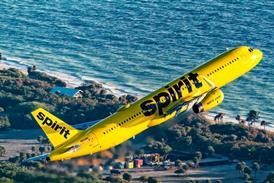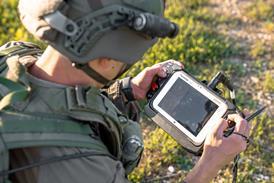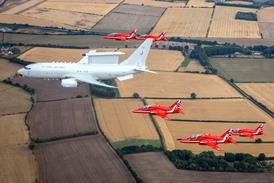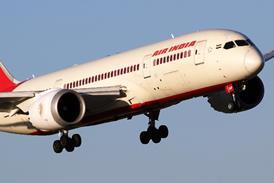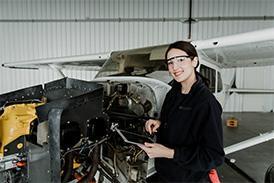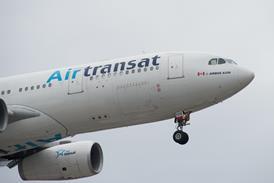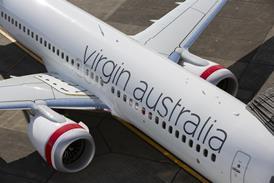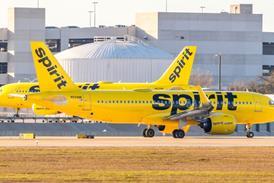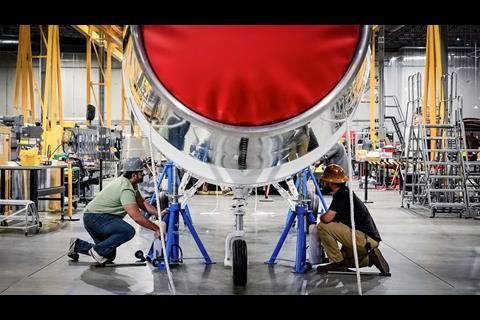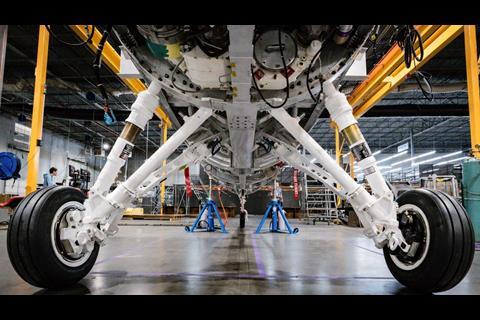Hypersonic fight start-up Hermeus is advancing production of its first supersonic-capable aircraft.
The company has released images of the Quarterhorse Mk 2 prototype progressing through assembly, with the weight of the partially complete airframe now fully supported by its tricycle landing gear.
Previous renderings provided by Hermeus indicate the final Mk 2 design will feature a delta wing configuration, variable air intake located in the nose cone, and be roughly the size of a Lockheed Martin F-16.
The company says the next stage of assembly, which is taking place in Atlanta, will be installing the uncrewed Mk 2’s Pratt & Whitney F100 turbofan engine.
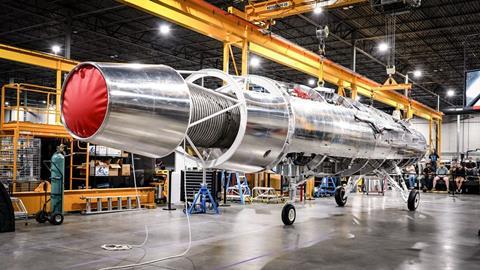
However, the final Quarterhorse Mk 2 propulsion system will be significantly altered from the standard F100 that powers fighters like the Lockheed Martin F-16 and Boeing F-15E.
Hermeus plans to modify the turbofan engine with a proprietary pre-cooling system that will be essential to propelling subsequent air vehicles beyond the Mach 5 barrier into hypersonic flight.
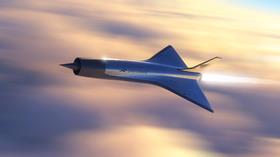
Pre-cooling refers to the chilling of engine intake air before compression and combustion. Colder intake air allows standard turbojet jet engines to operate at higher speeds, with greater efficiency and reduced performance degradation.
The technique is one possible solution to the one of the most vexing engineering challenges to reusable hypersonic flight: the transition from jet turbine to ramjet propulsion.
While high-speed ramjet engines are capable of reaching hypersonic speeds, the physics of current designs generally require airspeeds of around M3.5 to achieve compression significant enough to produce ignition and generate thrust.
Contemporary ramjet engines, and the related scramjet configuration, perform most efficiently at M4 and faster.
By contrast, most turbofan jet engines top out around M2.5
Using rocket motors, rather than jet engines, to accelerate to ramjet speeds is one solution to that gap. That is the strategy being pursued by California start-up Stratolaunch, whose Talon A uncrewed vehicle broke the hypersonic barrier earlier this year.
Engine maker GE Aerospace has taken a different approach: developing a more efficient ramjet that can function at lower airspeeds.
Hermeus has opted for the pre-cooler strategy, which seeks to bridge the transition gap by increasing the efficiency and performance of the F100 turbofan.
Integrating the conventional jet engine with a scramjet creates what is known as turbine-based combined cycle (TBCC) propulsion system. Hermeus calls its TBCC engine concept Chimera.
Although the Atlanta start-up has not revealed design specifics, pre-cooling can be accomplished using a heat exchanger and a cryogenic fuel, such as liquid hydrogen.
The Quarterhorse Mk 2 will not use Chimera. However, the supersonic-capable design will be key to testing the pre-cooler technology that is critical to Chimera achieving hypersonic speeds.
That TBCC engine will be installed on the subsequent Quarterhorse Mk 3, which will aim to breach the M5 threshold.
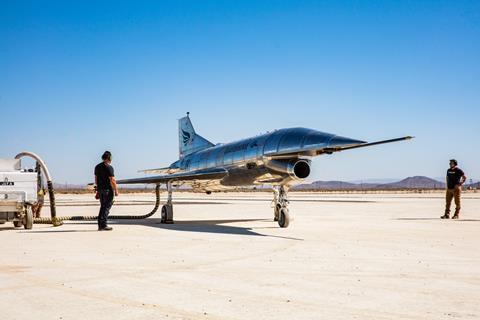
In May, Hermeus flew the Quarterhorse Mk 1 for the first time. That subsonic demonstrator was meant to validate aircraft design and performance models, including aerodynamics, stability and control.
Subsystems, including propulsion, fuel delivery, hydraulics, power and thermal management, and flight software, were also evaluated.
Hermeus at the time said the supersonic Quarterhorse Mk 2 is on track to fly before the end of this year.
Hermeus has laid out the goal of developing and testing “one aircraft per year” under the Quarterhorse project. The company says Mk 1 went from “clean-sheet to flight-ready” in little more than one year.
Whether that timeline can be maintained remains to be seen. Hermeus had at one point predicted that Quarterhorse Mk 1 would fly in summer of 2024, with the actual milestone coming nearly a year late.
The company has set the goal using the Mk 3 to surpass the airspeed record established by Lockheed’s SR-71 Blackbird nearly 50 years ago.
In 1976 one of the twin-engined surveillance jets reached a velocity of 1,905kt (3,529km/h) – or M3.3, according to the USA’s Smithsonian National Air and Space Museum.
See more photos of the Quarterhorse Mk 2 undergoing assembly:



